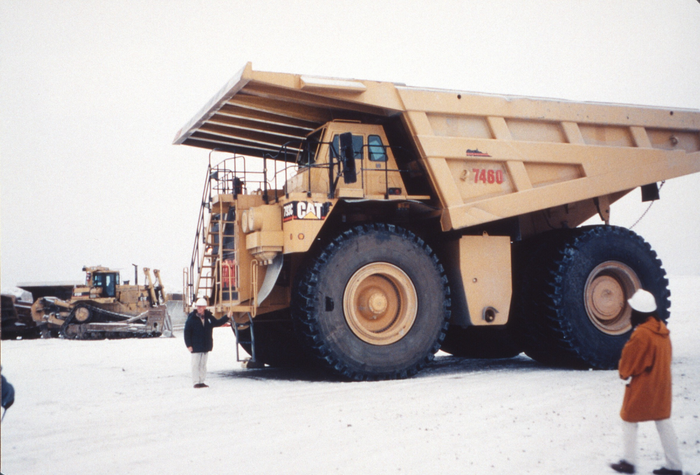From pv magazine USA
The construction of clean energy components produces carbon emissions. New research by Columbia University Climate School’s Lamont-Doherty Earth Observatory looks at just how much carbon the world could emit as it mines, manufactures, transports, constructs, and maintains solar and wind resources.
The report shows that emissions related to the energy transition are non-negligible, but there is a positive feedback loop in which the faster we build, the less emissions we produce. Having non-emitting power on hand to build more renewable energy resources will only lower the embodied emissions and stem the tide of climate change more rapidly. The researchers published their findings in Proceedings of the National Academy of Sciences.
The amount of emissions tied to an electricity generating facility from raw materials to operations is often referred to as “carbon backpack.” The current pace of renewables buildout is currently predicted to lead to about a 2.7 C temperature increase by 2100, resulting in 185 billion tons of carbon backpack. This is equivalent to about five or six years of global emissions at current rates.
The backpack is lighter with a more aggressive path. If humanity is to build infrastructure quickly enough to limit global warming to 2 C, which international agreements aiming to come under the 2 C mark, the carbon backpack would be cut nearly in half to 95 billion tons by 2100. If the energy transition exceeds all expectations and we limit temperature rise to 1.5 C, the carbon backpack would be more of a handbag – amounting to 20 billion tons by 2100, or about six months of current global emissions.
“The message is that it is going to take energy to rebuild the global energy system, and we need to account for that,” said researcher Corey Lesk. “Any way you do it, it’s not negligible. But the more you can initially bring on renewables, the more you can power the transition with renewables.”
Lesk and his colleagues said that these are likely conservative estimates. The study includes generation-side emissions, and omits the cost of deploying energy storage and transmission. Distributed energy resources require much less of this type of infrastructure than centralized power, so the profile of solar and wind projects will impact this outcome greatly.
The study also modeled carbon emissions from adapting to sea-level rise. It found that construction of sea walls and moving cities inland where necessary would generate 1 billion tons of carbon dioxide by 2,100 under the 2 C scenario. More energy will need to be expended to control inland flooding, irrigation in areas that might become drier, and adapting buildings to higher temperature extremes.
Lesk remains optimistic. He said that given cost decreases in recent years for renewable technologies, 80% to 90% of what the world needs could be installed in the next few decades, especially if current subsidies for fossil-fuel production are diverted to renewables.
This global clean energy transition is estimated to cost $3.5 trillion per year every year through 2050 in order to reach net-zero emissions, according to one study, or up to about $14 trillion for the United States alone in the same timeframe, according to another report.
“Despite these limitations, we conclude that the magnitude of CO2 emissions embedded in the broader climate transition are of geophysical and policy relevance,” said the researchers. “Transition emissions can be greatly reduced under faster-paced decarbonization, lending new urgency to policy progress on rapid renewable energy deployment.”
This content is protected by copyright and may not be reused. If you want to cooperate with us and would like to reuse some of our content, please contact: editors@pv-magazine.com.




My name zubair Usmani pakistan my Soler working and seting my Felix work in all Pcb
all working PCb